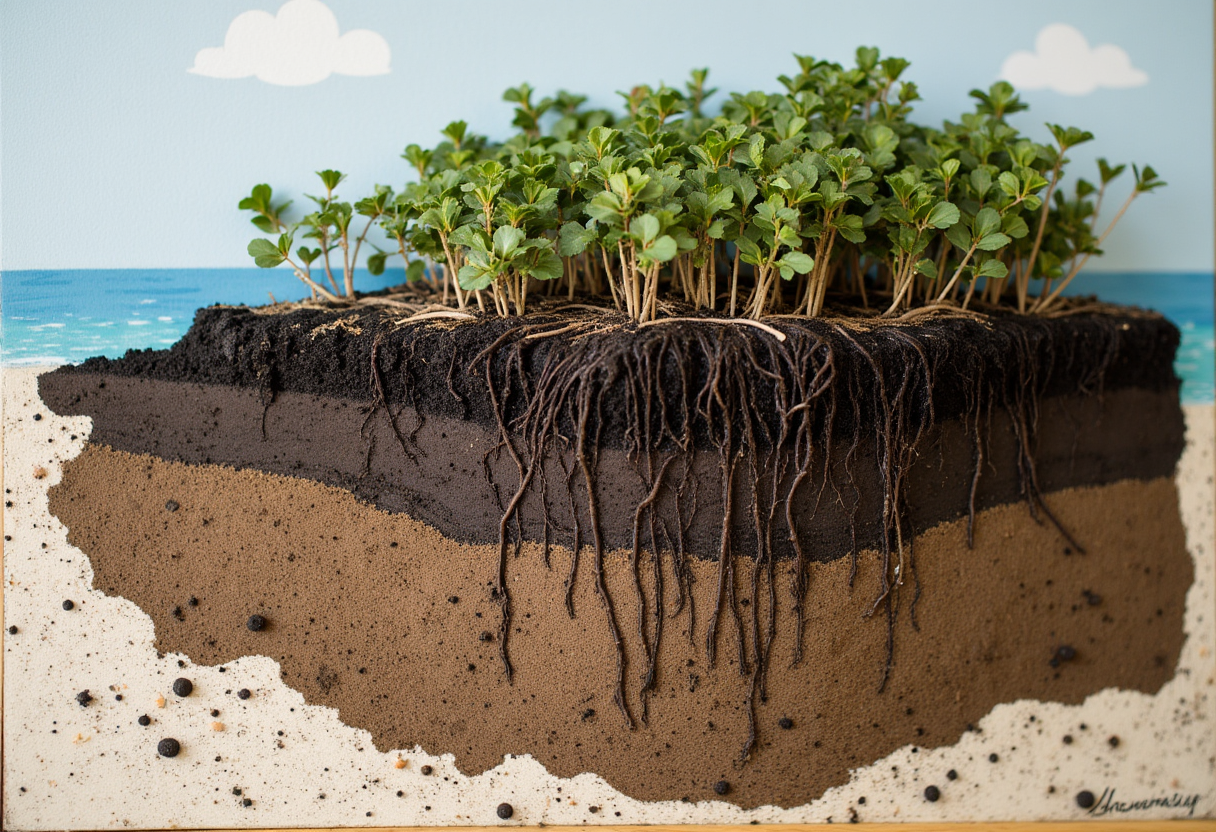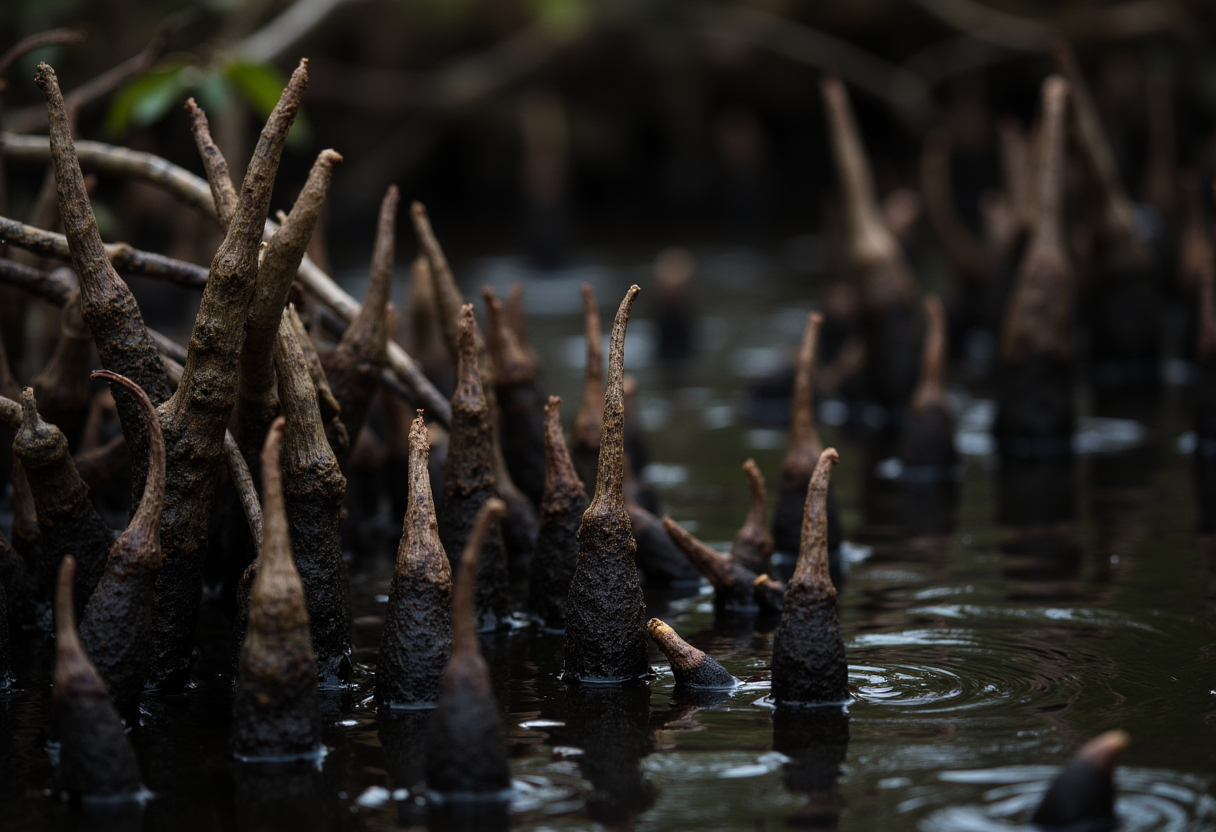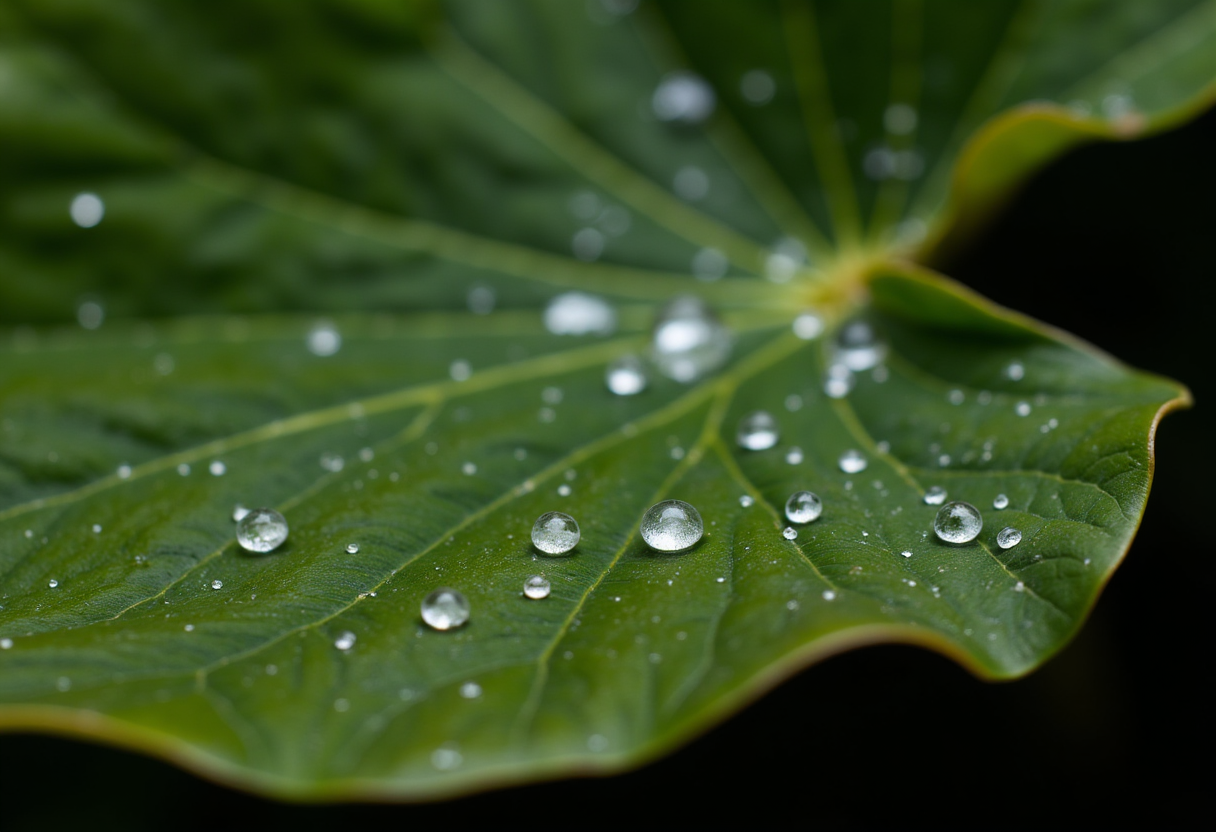Rooted and Ruthless: Why Florida Mangroves Matter
Mangrove Superheroes (Artistic Concept): An artistic, slightly abstract depiction of the three mangrove species – Red, Black, and White – personified as superheroes
They’re not pretty. They’re not fragrant. But they just might be Florida’s real-life superheroes.
Florida Mangroves—messy, stubborn, and essential tidal trees that defend shorelines, support wildlife, and store carbon in ways most forests don’t.
Read on to learn how these mangrove communities protect our coasts, support people and nature, and matter to Florida today.
🌱 What Are Florida Mangroves, Anyway?
They don’t wear capes. They don’t smell like roses. And if you’ve ever tangled your kayak paddle in one, you know they’ve got a temper—yet these mangrove trees are ecological heavyweights.
But make no mistake—Florida mangroves are environmental MVPs, standing waist-deep in brackish water and forming the first line of defense for our coastlines.
Florida is home to three native mangrove species (each with a distinct role in shoreline defense and habitat):
- 🟥 Red mangroves (Rhizophora mangle): Those dramatic trees with “prop roots” that brace like stilts in the water—usually closest to the shoreline. Red mangroves commonly dominate sheltered estuarine edges and tidal creeks.
- ⬛ Black mangroves (Avicennia germinans): Recognizable by snorkel-like roots (pneumatophores) that stick up through anoxic muck to help the tree breathe.
- ⬜ White mangroves (Laguncularia racemosa): Typically found further inland, with smooth bark and oval leaves; they help form the transition from saltwater forests to upland habitats.
Together these species build a messy-looking fortress—a mangrove forest—that stabilizes shorelines, creates nursery habitat for fisheries, and shapes how mangroves grow and migrate as sea level and development pressures change.
Red Mangrove - Prop Roots: A close-up, dramatic shot of the intricate, arching prop roots of a Red Mangrove, firmly anchored in brackish water.
🛡️ How Florida Mangroves Protect the Coast (and Your Beach House)
Let’s talk strength. Mangroves don’t just live at the water’s edge—they actively reduce risk for shorelines, people, and property.
- 🌊 Storm surge absorption: Studies show that a wide, healthy mangrove forest can reduce wave energy substantially—some field and modeling studies report reductions of 50–70% over the seaward edge to the landward edge depending on forest width and density (source: coastal protection literature and NOAA reports).
- ⛓️ Erosion control: The dense network of roots and trapped sediment builds and stabilizes soils, slowing shoreline retreat and protecting adjacent land from erosion.
- 🏘️ Property protection: During Hurricane Irma and other major storms, areas backed by intact mangrove forests experienced lower wave heights and reduced inundation compared with heavily developed, cleared shorelines—evidence that mangrove systems can lessen storm impacts on communities (see NOAA and case-study reports).
- 🧪 Water filtration: Mangrove roots and sediments trap suspended sediments and absorb or transform pollutants, improving coastal water quality and helping nearby seagrass beds and reefs by reducing turbidity and nutrient loads.
How does this happen? The aerial and prop roots dissipate wave energy by increasing friction and forcing water to slow and drop sediment; the soils then store carbon and stabilize the shoreline. In short: roots do the heavy lifting, sediments lock the gains, and the forest acts as a living buffer.
“They don’t ask for much—just space to stretch, a little brackish water, and not getting bulldozed.”
Storm Surge Absorption - Before & After: A split image. One side shows a powerful ocean wave crashing unimpeded onto a bare coastline. The other side shows the same wave's energy significantly dampened and diffused as it encounters a dense, healthy wall of mangrove forest.
🐟 Nurseries for Fish, Condos for Crabs, Perches for Birds
Beneath those tangled roots is a bustling habitat—an underwater neighborhood that supports commercial fisheries, coastal wildlife, and recreational birding.
- Juvenile snook, tarpon, redfish, and snapper use mangroves as nurseries, sheltering among submerged roots for weeks to months until they grow large enough to enter open water fisheries.
- Crabs, shrimp, and countless invertebrates feed and hide in the complex root systems, supporting the food web that sustains larger predators and local seafood harvests.
- Spoonbills, ibises, herons, and even the occasional eagle roost or nest in the canopy—making mangroves prime spots for birding and wildlife viewing.
Lose the mangroves, and you lose critical nursery habitat that underpins both commercial and recreational fishing—and a lot of local life.
“It’s like a fishy preschool—only the snacks are live bait.”
🌀 Climate Heroes in Flip-Flops
Mangroves don’t just protect Florida from wind and waves—they sequester carbon, hold water, and stabilize soils in ways many other forests cannot.
- Carbon storage: Mangrove soils store substantially more carbon per hectare than most upland forests; peer-reviewed studies often report soils and sediments holding multiple times the carbon of terrestrial systems (source: coastal blue carbon literature).
- Water retention: Mangrove wetlands soak up stormwater, slow runoff, and reduce flooding impacts on adjacent communities and seagrass beds.
Carbon Storage - Soil Profile: An illustrative cross-section of mangrove soil, perhaps in a scientific-looking graphic or a carefully constructed diorama.
- Heat regulation & oxygen: The canopy provides shade and local cooling, while mangrove productivity contributes to oxygen and nutrient cycling in coastal ecosystems.
They’re not flashy—but their services are vital to coastal resilience and carbon management.
😆 Swamp Chic: Humor with Your Habitat
Florida mangroves have character. Plenty of it. Consider these cheeky lines for a sidebar or pull-quote so the facts keep flowing:
- “The only trees that breathe through their feet and look good doing it.”
- “Like a swamp threw spaghetti at a beach and said, ‘Here—this’ll hold.’”
- “Nature’s way of saying: ‘You sure you want to build there, buddy?’”
🧭 Where to Find Florida Mangroves in the Wild
These wild wonders are accessible across the state—bring binoculars, a low-draft boat, or comfortable shoes and follow local guidelines when visiting.
| 🌍 Location | 📍 Region | 🌿 Highlights |
| Ten Thousand Islands NWR | Gulf Coast | Maze of tidal creeks, manatees, and gators |
| Everglades National Park | South FL | Largest contiguous mangrove forest in North America |
| Indian River Lagoon | East Coast | Over 2,000 plant & animal species |
| Rookery Bay Reserve | Naples | Guided eco-tours and estuary education |
| Clam Pass Park | Naples | Stilted boardwalks into saltwater forests |
→ Explore Florida’s mangrove state parks (check permits and seasonal restrictions before you go)
💡 Not Just Trees—They’re Living Neighborhoods
Each mangrove cluster is a functioning community: a tangled web of roots, soils, and life that supports fisheries, wildlife, and people.
- Red mangrove roots provide critical hiding spots and shelter for baby fish, increasing juvenile survival rates in nearby bays and estuaries.
Black Mangrove - Pneumatophores: A scene focusing on the unique "snorkel-like" pneumatophores of Black Mangroves, sticking up from dark, muddy soil.
- Black mangroves improve oxygen availability in otherwise anoxic (oxygen-poor) soils through their pneumatophores, helping sustain belowground organisms and nutrient cycling.
- White mangroves form the inland transition, linking saltwater systems to upland forests and broadening habitat variety for terrestrial and marine species.
Even the mud is alive: microbial communities in mangrove soils cycle nutrients, sequester carbon, and boost overall biodiversity. It’s messy—and magnificent.
“If Florida had a backbone, it’d probably be made of mangrove roots.”
💔 What’s Threatening Florida Mangroves?
These resilient systems face serious human pressures.
- 🏗️ Development & dredging: Coastal development and associated dredging have historically cleared and fragmented thousands of acres, reducing the portion of natural shoreline that can host mangroves.
- 🧪 Polluted runoff: Nutrient and chemical runoff from lawns, roads, and agriculture degrades water and chokes root systems, harming mangrove health and nearby seagrass beds.
- 🌊 Sea-level rise and storms: Rapid sea-level rise and increased storm intensity can outpace natural mangrove migration, drowning seedlings or shifting suitable habitat inland where development blocks movement.
- 😓 Misconceptions: Some people still view mangroves as “swamp trash,” a perception that can justify removal instead of protection—education is essential to change the narrative.
Florida law provides protections for mangroves, but enforcement and local implementation vary. Local restoration and protection efforts help fill gaps: community volunteers, restoration projects, and policy advocacy have all shown measurable benefits in recent reports.
White Mangrove - Salt Secretion: A detailed macro shot of a White Mangrove leaf, showing subtle salt crystals or droplets glistening on its surface
📸 Visual suggestion: Arching red mangroves, with a “Do Not Trim Without Permit” sign in foreground.
📣 How to Support Florida’s Saltwater Forests
You don’t need hip waders to help. Practical actions you can take today:
- ⚖️ Know the law: Before trimming or altering shoreline vegetation, check Florida DEP and local county mangrove permit rules to ensure protection and avoid fines.
- 💵 Donate & volunteer: Support organizations such as Mangrove Action Project and The Nature Conservancy Florida, or join local restoration plantings—these restoration efforts have replanted acres and improved nursery habitat in recent projects.
- 🧠 Share accurate information: Counter misinformation by sharing reputable reports and resources about mangrove benefits and protection.
- 🚣 Book responsible eco-tours: Choose guides who follow best practices and contribute to conservation or citizen-science monitoring.
“Mangroves don’t ask for praise. But they deserve a standing ovation—if only your kayak wasn’t so wobbly.”
🚸 Mangrove Etiquette: How Not to Be "That Tourist"
Visiting a mangrove tunnel? Great—follow these simple rules to protect habitat and wildlife:
- Leave no trace: Pack out trash and avoid leaving anything that could harm crabs, birds, or juvenile fish.
- Stay in your lane: Paddle or boat slowly and avoid pushing through root systems—propeller scarring and trampling damage habitat.
- No trimming, no touching: Don’t remove roots or branches; permits are required and cutting harms the ecosystem.
- Keep quiet: Minimize noise to avoid stressing nesting birds and other wildlife.
“Exploring mangroves isn’t an extreme sport. It’s a slow dance—with mud on your shoes and magic all around you.”
🌊 A Tangled Legacy: Mangroves in Florida’s History
Long before beachfront condos and souvenir shops, mangroves ruled the tide. Indigenous peoples such as the Calusa and Tequesta used mangrove wood for tools, canoe building, and everyday needs—relying on the forest for fishing, shelter, and medicine.
Early Spanish explorers recorded dense "manglar" thickets that were often near-impenetrable; by the 1900s, however, many of these areas were dredged, burned, or filled to make way for roads, development, and agriculture—costing untold miles of nursery habitat, storm buffers, and cultural resources.
Today, restoration efforts across Florida are working to reclaim that legacy. Community and scientific restoration projects are planting seedlings, constructing living shorelines and artificial islands, and piloting drone-assisted planting to accelerate recovery. These restoration projects not only rebuild mangrove forests but also restore habitat, sequester carbon, and improve resilience to future storms.
If you want to help, start local: donate to or volunteer with restoration programs, attend a planting event, or use the resources linked in our further-reading reports to learn how your community can support mangrove protection and restoration.
Wildlife Haven - Birds & Critters: A rich ecosystem scene within a mangrove forest. A Spoonbill or Ibis is perched elegantly in the canopy, while a curious crab peeks from the roots.
🧪 The Future of Florida Mangroves: More Than Mud and Mystery
Science and technology are giving managers new tools: NASA and NOAA satellite imagery track broad-scale mangrove health and change over time; AI models and drones map migration patterns as sea levels rise; and pilot projects test floating mangrove islands and urban buffers to clean water and protect shorelines. With climate resilience funding, many Florida communities are now investing in mangrove buffers as part of long-term disaster planning.
Imagine that—mangrove forests getting the spotlight not just for their beauty, but for their measurable benefits to people, nature, and the climate.
📝 Coming Soon to Florida Unwritten
This was just the first tangle. Keep an eye out for related stories and sample reports such as:
- “Ghosts in the Roots: Mangrove Myths from the Gulf Coast”
- “Backwater Turf Wars: Mangroves vs. McMansions”
- “The Gator Knows: Wildlife Lessons from the Wetlands”
We’re not just writing about Florida. We’re rooting for it—join restoration efforts in your community and help protect these vital systems for the next generation.
Earl Stafford







